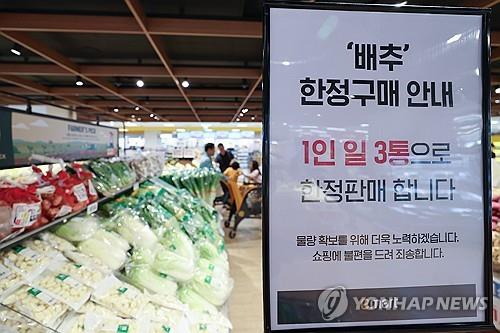- California Assembly OKs highest minimum wage in nation
- S. Korea unveils first graphic cigarette warnings
- US joins with South Korea, Japan in bid to deter North Korea
- LPGA golfer Chun In-gee finally back in action
- S. Korea won’t be top seed in final World Cup qualification round
- US men’s soccer misses 2nd straight Olympics
- US back on track in qualifying with 4-0 win over Guatemala
- High-intensity workout injuries spawn cottage industry
- CDC expands range of Zika mosquitoes into parts of Northeast
- Who knew? ‘The Walking Dead’ is helping families connect
Consumer inflation slows to 3 1/2-year low of 1.6 pct in Sept. Oh Seok-min, 오석민 Oh Seok-min
South Korea’s consumer prices slowed to the lowest level in 3 1/2 years in September, falling below 2 percent for the first time since early 2021, data showed Wednesday.
Consumer prices, a key gauge of inflation, rose 1.6 percent on-year last month, compared with a 2 percent increase a month earlier, according to the data from Statistics Korea.
September’s figure marked the lowest level since February 2021, when consumer prices grew 1.4 percent.
The figure last came to the 1 percent range in March 2021 by logging 1.9 percent.
The government has said that the country is projected to reach the target rate of 2 percent by around the end of 2024, and it saw consumer inflation stay below 3 percent for the sixth consecutive month through September.
In January, inflation slowed to 2.8 percent, dropping below 3 percent for the first time since July 2023, but it edged up to 3.1 percent in February and stayed at the same level the following month before cooling to 2.9 percent in April.
The figure then fell to 2.5 percent in May and further to 2.4 percent in June before rising to 2.6 percent in July.
The finance ministry expects this year’s prices to rise 2.6 percent.

Prices of agricultural, livestock and fisheries products went up 2.3 percent on-year.
Vegetables, in particular, spiked 11.5 percent, due to a prolonged heat wave.
Of major items, prices of napa cabbages surged 53.6 percent and those of radishes spiked 41.6 percent, adding pressure on households as cabbages and radishes are key ingredients of kimchi, and the annual tradition of “gimjang” usually takes place from November to December as people make large amounts of kimchi as part of preparations for the cold winter.
But prices of petroleum products fell 7.6 percent on-year in September on stabilizing global oil prices. It was the first time that the figure fell since February this year.
Dubai crude, South Korea’s benchmark, came to US$73.52 per barrel on average last month, falling from August’s $77.70, according to government data.
Service prices gained 2.2 percent on-year in September.
Core inflation, which excludes volatile food and energy prices, added 2 percent on-year in September, down from 2.1 percent a month earlier.
Prices of daily necessities — 144 items closely related to people’s everyday lives, such as food, clothing and housing — climbed 1.5 percent last month, the data showed.
“Prices have stabilized, but there exist uncertainties, such as the growing volatility in global oil prices and surging prices of farm produce caused by abnormal weather conditions. The government will not relax our guard and continue to strive for curbing inflation,” Finance Minister Choi Sang-mok said during an economy-related ministers’ meeting.
As the inflation reading came below the Bank of Korea’s midterm target of 2 percent, there have been expectations for an interest rate cut as early as October.
In August, the BOK froze the key rate at a 16-year high of 3.5 percent, unchanged since February 2023, despite moderating inflation. Gov. Rhee Chang-yong said it needs to consider rising home prices and surging household debts as crucial factors for a possible rate cut despite sluggish domestic demand.











